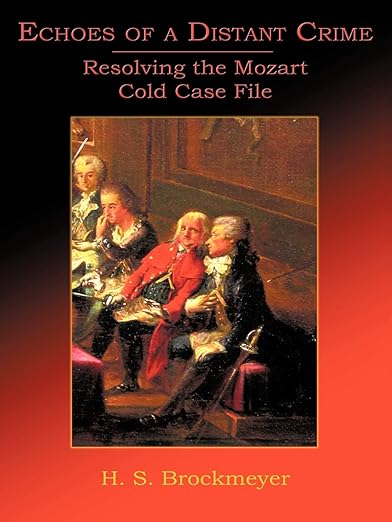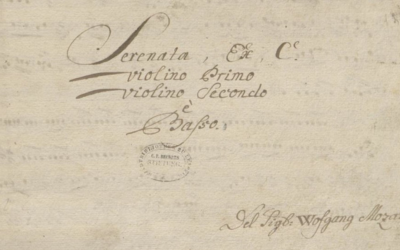The Mystery of Mozart’s Burial: Constanze vs. The Catholic Church
A Closer Look at the Secrets Behind Mozart’s Final Resting Place
For over two centuries, scholars have debated the circumstances surrounding Mozart’s burial. Constanze Mozart’s supposed inability to mark his grave, the confrontation with the Catholic Church over funeral masses, and the baffling disappearance of Mozart’s body all contribute to a mystery stranger than fiction. Did a powerful group keep her silent? And what really happened to Mozart’s remains?
"The real truth is stranger than all fiction."
H. S. Brockmeyer
This article is the continuation of an in-depth analysis by H. S. Brockmeyer. In Part I, the complex relationship between Constanze Mozart and her late husband was explored, challenging long-held assumptions about her supposed neglect. Brockmeyer examined her efforts to preserve Mozart’s legacy, including her treasured keepsakes, travels, and letters. The mystery surrounding Mozart’s burial was introduced, raising questions about his final resting place, the lack of a headstone, and the contradictions in historical records. In this second installment, Brockmeyer delves further into the bizarre circumstances of Mozart’s burial, his unexplained absence from St. Marx Cemetery, and the Catholic Church’s enigmatic refusal to grant funeral masses.
A Grave Without a Marker
One of the most persistent myths about Mozart’s burial is that Constanze Mozart was simply unable to erect a gravestone due to burial customs of the time. H. S. Brockmeyer dismantles this theory, demonstrating that Joseph II’s burial decrees never explicitly forbade headstones. Despite this, neither Constanze nor Mozart’s wealthy patrons, including Freemason Brothers and aristocratic acquaintances, ever ensured that a proper gravestone was placed at St. Marx Cemetery. Why?
The Strange Confrontation with the Catholic Church
In 1836, Constanze attempted to pay for masses for Mozart, her second husband Georg Nissen, and other family members. Despite prepaying, church officials refused the request. Their reasoning? Nissen was not Catholic. Yet this does not explain why masses were also denied for Mozart, Nannerl, and Sophie Haibl. Was Mozart’s Masonic affiliation a factor in the church’s refusal? The Catholic Church’s antagonism toward Freemasonry was well-documented, and its reluctance to honor Mozart in death raises serious questions.
The Last Sighting of Mozart’s Body
According to Brockmeyer, the last known location of Mozart’s body was not in a church or cemetery, but at Emanuel Schikaneder’s Freihaus Theater. A young woman claimed to have seen Mozart’s corpse there, a revelation kept secret for decades. If true, this suggests an alternative fate for his remains, contradicting the widely accepted account of his burial at St. Marx. If Mozart was indeed last seen at the Freihaus Theater, how did his body make its way to an unmarked grave?
A Masonic Funeral That Never Happened
As a Master Mason, Mozart was entitled to a proper Masonic funeral, with all expenses covered by his lodge. Yet no such funeral was arranged. Had Mozart not formally requested it, or was there an active effort to deny him this final rite? Brockmeyer highlights the silence of Mozart’s influential Freemason acquaintances, including Baron van Swieten and Michael Puchberg, who seemingly did nothing to ensure a dignified burial for their brother in the lodge.
Constanze’s Silence and the Mystery Unresolved
Even when confronted about her failure to mark Mozart’s grave, Constanze’s explanations were vague and contradictory. She claimed that no one could find the exact burial site, yet she made no effort to challenge this or seek alternative memorials. Brockmeyer suggests that she refused to place a gravestone because she knew Mozart was not buried at St. Marx at all. If true, this would mean the past two centuries of speculation were built on a false premise.
Final Thoughts
H. S. Brockmeyer’s research challenges the accepted narrative of Mozart’s burial, revealing inconsistencies and deliberate omissions. From the Catholic Church’s obstruction to the unexplained last sighting of Mozart’s body, the questions surrounding his fate remain unresolved. As Brockmeyer aptly puts it:
“The real truth is stranger than all fiction.”
You May Also Like
#4 The Golden Spur
While often portrayed as a prestigious award, the Golden Spur (Speron d’Oro) granted to Mozart in 1770 was far from a reflection of his musical genius. In this article, we delve into the true story behind this now-forgotten honour, its loss of value, and the role of Leopold Mozart’s ambitions in securing it.
Mozart Unmasked: The Untold Story of His Italian Years
Explore the lesser-known side of Wolfgang Amadé Mozart’s early years in Italy. ‘Mozart in Italy’ unveils the complexities, controversies, and hidden truths behind his formative experiences, guided by meticulous research and rare historical documents. Delve into a story that challenges the traditional narrative and offers a fresh perspective on one of history’s most enigmatic composers.
Another Example of Borrowed Genius
The myth of Mozart’s genius continues to collapse under the weight of his reliance on others’ ideas, with Leopold orchestrating his son’s supposed early brilliance.
A Genius or a Patchwork?
The genius of Mozart had yet to bloom, despite the anecdotes passed down to us. These concertos were not the work of a prodigy, but a collaborative effort between father and son, built on the music of others.
Myth, Reality, and the Hand of Martini
Mozart handed over Martini’s Antiphon, not his own, avoiding what could have been an embarrassing failure. The young prodigy had a lot to learn, and much of what followed was myth-making at its finest.
Mozart’s Serenade? A New Discovery? Really?
In Leipzig, what was thought to be a new autograph of Mozart turned out to be a questionable copy. Why are such rushed attributions so common for Mozart, and why is it so hard to correct them when proven false?







